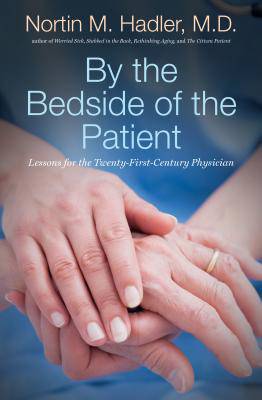
- Afhalen na 1 uur in een winkel met voorraad
- Gratis thuislevering in België vanaf € 30
- Ruim aanbod met 7 miljoen producten
- Afhalen na 1 uur in een winkel met voorraad
- Gratis thuislevering in België vanaf € 30
- Ruim aanbod met 7 miljoen producten
Zoeken
By the Bedside of the Patient
Lessons for the Twenty-First-Century Physician
Nortin M Hadler
Hardcover | Engels
€ 46,45
+ 92 punten
Omschrijving
In By the Bedside of the Patient, Nortin Hadler places current efforts to reform medical education -- from the undergraduate level through residency programs and on to continuing medical education -- in historical context. In doing so, he traces the evolution of medical school curricula, residency and fellowship programs, and the clinical practices they promoted. Hadler examines crucial junctures in history to locate the seeds for reform. Some believe that medical education and training should highlight literature, ethics, and culture, while others emphasize science and efficiency to abbreviate the time from entry to licensure. Neither of these approaches, Hadler argues, maintains or improves patient care, which should be at the core of medical education and practice. Hadler contends that most reform attempted thus far constitutes, at best, little more than a reshuffling of the basic curriculum and, at worst, an augmenting of medicine's predilection to measure, grade, and record. Examining generational changes in medical education, Hadler mines sixty years of training and practice to identify mistaken approaches and best practices. Ultimately, in the contemporary era of managed care, Hadler argues for a clinical practice that draws on the best available scientific knowledge, transmits the wisdom of experienced clinicians, reforges an empathetic relationship between physician and patient, and treats each patient as an individual -- all centered on restoring the mandate to care.
Specificaties
Betrokkenen
- Auteur(s):
- Uitgeverij:
Inhoud
- Aantal bladzijden:
- 224
- Taal:
- Engels
Eigenschappen
- Productcode (EAN):
- 9781469626666
- Verschijningsdatum:
- 18/03/2016
- Uitvoering:
- Hardcover
- Formaat:
- Genaaid
- Afmetingen:
- 165 mm x 239 mm
- Gewicht:
- 476 g

Alleen bij Standaard Boekhandel
+ 92 punten op je klantenkaart van Standaard Boekhandel
Beoordelingen
We publiceren alleen reviews die voldoen aan de voorwaarden voor reviews. Bekijk onze voorwaarden voor reviews.











